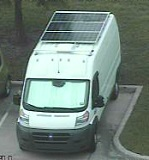Thinking of self installing a 5kW solution onto a South facing garage. DIY solution appears to be 60% cheaper than hiring a local installer (Ohio)
I’m an electrician, I found my own solar panels incredibly easy to install. The job is 90% racking and I would recommend buying a racking package if possible which includes all mounts, rail and fasteners.
Take care as solar panels are ALWAYS LIVE. This is why they use the shielded connectors that they do. Do all the rest of your wiring first, then plug the panels in last.
Make sure you have appropriate disconnecting means. If this is going to be grid tied in any way, make sure you’re familiar with the code as it will be inspected. If not grid tied you may be exempt, but this is no reason to just slap it up, still follow the code as it’s there for your safety.
I recommend grid-interactive systems over grid-tied if you actually want to be power independent. Microinverters seem great until the power goes out and your panels are good for nothing. I would recommend a power blending transverter type system that allows 3-way power flow between panels, battery and grid. They have come way down in price and allow seamless integration of your loads compared to a charger/inverter system like I have.
Run a string voltage as close as possible to your battery voltage to avoid conversion losses. It’s tempting to go for high string voltages but roof mount distances are usually really short and conversion will likely be most of your loss. I started with 140VDC strings and my charger ran hot, dropping to 70VDC made it run cool and boosted my output by over 10%.
Depending on your utility it may not be worth selling power and the hassle or extra fees and regulations that come with it. That’s the case here - I just have automation set up to burn excess power for heat in winter and cooling in summer.
Best of luck with your install, for sure it is way cheaper to DIY and not hard at all.
Thanks for this extensive reply. Not the OP, but I’ve been slowly doing my research on this, and this gave me a good base of things to look into. Cheers!
An example of of “grid-interactive” system is the ecoflow smart home panel. It’s the front runner I’m looking at right now for my own system. It will dynamically balance where power is coming from based on your batteries/solar/grid state. Easy to expand battery packs, and ties directly into up to 10 circuits.
What kind of charger are you using that needs to voltage match the batteries? I’m running 500V strings on a Luxpower 18K and it’s not an issue with the chargers in that.
Schneider MPPT 150. We sell a lot of Schneider at work and I got a good price on it. However it’s totally a piece of crap. It’s the only “150v” device I’ve ever seen where 150v is the do not exceed voltage rather than the operating voltage, and it will trip offline at 140v which causes a huge issue here in Canada where OCV can rise greatly below -20C.
Wouldn’t recommend Schneider in general as they require their own proprietary CANBus mod to get telemetry out of any of their equipment.
That’s been my impression of Schneider, great on AC but their solar stuff is a placeholder for “nobody every got fired for buying Schneider”. I thought they ran Modbus on their comms, pretty sure I’ve seen the modbus maps for them around the Homeassistant forums. Maybe it’s just some equipment, but the Conext is modbus afaik.
I wouldn’t say the “150V” should be operating voltage by default, most SCCs I’ve used put that as the “do not exceed” number, just like the current. I’ve smoked relatively expensive charge controllers by being slightly over either of those numbers. Though Victron seem to be able to take it for a while without cratering.
Conext series support modbus BUT only through an overpriced gateway unit, the actual devices speak Xanbus unless they have updated them. There have been reverse engineering efforts that I think found it to be a polarity flipped or bit flipped CANbus but at the time nobody had a reliable translation layer. I believe Schneider bought Xantrex and rebranded their inverters and chargers as their Conext solar line.
The “do not exceed” nameplate ratings may be more typical in solar, but in the regular electrical world when I buy a solid state device like a 480 volt VFD, I expect it to run at 480VAC, and in fact to have a fairly broad operating range from probably 450-500VAC. Likewise I would expect the current rating to be full load operating current, hopefully with at least a 10% service factor and 20% safety margin on top of that.
I was honestly pretty disappointed when a 150VDC unit tripped offline at 140VDC, not even making the “nameplate rating” but if this is standard for the industry I guess I can’t pick at Schneider for that at least.
140 is a little light but yah, it’s definitely a solar thing only. It’s possible it bounced over the 150 for a very short time to trip the cutout, and the 140 number you’re seeing is a time-smoothed average in your reporting system. If you’re using something trustworthy like a Smartshunt to get that data, then yah, tripping 10V short isn’t great.
I checked the manual and it’s actually documented to trip at 137V and open its fault relay, and won’t reclose until the input voltage drops to 134V. This is hidden in the fault section and not really advertised in the specs.
Obviously in a cold weather overvoltage situation this loss of load causes immediate runaway, which resulted in many full days of lost generation until I rewired the array down to 2s strings.
This issue was actually what resulted in me building the first dump load for the system, because as long as I kept the array loaded enough it wouldn’t trip out. No way I was breaking the connectors or my fingers off during several weeks at -30C!
Yah, I’m in N Alberta and a farmer, fixing things at -30 is never fun. Those MC4 connectors are a pain in the ass when they’re cold.
deleted by creator
Whether you’re doing DIY or not, please check for available guidelines or regulations wrt safety in case of a fire. The fire fighters need to be able to spray your house with water without getting electrocuted. This is becoming an increasing problem where I live.
deleted by creator
If the guy working inside the meter doesn’t test for dead, lock out and tag out… He has no business working in there in the first place.
deleted by creator
I’m not saying “there’s no need to do it”, more if you’re in a panel and you haven’t checked for dead then when people are standing in the dock explaining to a judge why you ended up crispy they’ll be saying its your own fault.
Completely agree, recent NEC requires rapid disconnects on each panel that go down to a safe voltage per panel if the heartbeat isn’t received (ie disconnect is thrown). This drops the strong voltage to safe levels.
I’m an electrical engineer who designs commercial and Utility Scale PV systems (i.e. Multi acre solar power plants), though I’ve done a couple dozen residential systems as well.
@evranch@lemmy.ca chimed in with some really good advice, but I wanted to add a few things.
If I were to do my own system I’d go with micro inverters, enphase IQ8 most likely, as they can be setup to operate during a grid outage, either with a battery backup, or with a load balancing panel.
Careful of the downfalls of going the DIY route, not sure how it is in your state, but in some states I’ve worked in you will forfeit incentives if you don’t use a qualified installer.
Get familiar with your utilities net metering policies, if they don’t net meter power at or near retail rates then you’ll end up giving them your power for free/cheap whenever you overgenerate. Some utilities will also make it difficult if you’re not going through a qualified installer.
Lastly, and this is coming from someone who understands the industry intimately, really take a look at the numbers and decide if this makes sense for you. Most residential solar will take 5-10 years to pay for itself (after incentives) and start to generate a profit. Compare that with the same sum invested in a general s&p500 index fund which would likely have doubled in value during that time.
Ultimately I decided not to install solar on my home, despite the ability to 100% DIY the whole thing and get parts at steep discounts, and instead installed a backup generator and signed up with a local community solar array (which is not something that all states/utilities allow).
Happy to answer any questions you may have!
One guy from Poland posted a video in polish on YT where he calculated that his roof solar in last 10 years of operation provided significantly less RoI than if he simply bought gold at market price 10 years ago and sold it now.
This is a freaking scam over here. We need power mostly in winter, especially with the push to install more heat pumps. Solar is not working in the winter here, people literally got scammed by government that subsidized solar and heat pumps installations for lower income families on the condition that they remove coal or wood powered heating. Now they can’t afford to run those heat pumps!
in poland specifically:
- if you want to sell energy to grid, terms absolutely suck
- grid is often overloaded in the summer in areas with large # of pv installations, meaning too high voltage, meaning inverters shut down;
- there was a years long robocall campaign that sold these installations. pv installations are subsidized so more people could set it up and middlemen like this appeared
if you want to reduce your carbon footprint, or you want to use it all without selling energy, or such, you’ll be fine. if you believed robocalls that say that it will get you net passive income from that, tough luck
if you want to get a better deal, get solar water heater. it works always if there are no clouds, even in winter you can get 40C on a clear day
Thanks for this reply! I put off the professional install of panels as the ROI was just too far out. Self install did come up as I’m fairly competent but your points still highlight the problems. Sometimes the numbers just don’t work, even if you can do it cheap
Yes.
https://static.xtremeownage.com/pages/Projects/Solar-Project/
So. my recommendation, take the amount of panels you think you need, and double it.
With the exception my capacity being a bit less then what I actually need. Happy with my solution. Power outages are a thing of the past now. Had a disaster knock out power for the entire area for around a week earlier this year. I was able to run completely off-grid during the entire ordeal, and that includes running the central HVAC.
But- a few notes…
- Ohio doesn’t get the best solar radiance. Install more panels.
- For DIY, look here: https://signaturesolar.com/ Those guys have the best pricing you are going to find. I use their EG4 batteries. I hear good things about the inverters too.
I’m not an electrician, but an electrical engineer, and I bought a complete DIY package with everything. Electrical code here in Denmark then only needs a certified electrician to do the connection to the the grid, which includes submitting the system to the grid operator, also so we can be paid for the surplus production.
If you know how to read the instructions, and plan your work, it’s quite fun, and I’m pretty sure my panels are better secured (likely overkill) and more straight than 80% of the professional installs here, just because we took the time to do it thoroughly.
If you feel have the ability and you have the time, I would highly recommend it. But as another pointed out, try to find a kit with the mounting hardware!
Another Dane here - can you have an independent system here, not connected to the grid?
I don’t think there is anything blocking that from happening, but what scale are you thinking?
Just house-scale. It’s just that with how DK laws can be I wouldn’t be surprised if it would be illlegal
I think I need more details: are you planning on running your house completely off-grid from solar, or Install (a set of) outlets that are powered by solar?
Has anyone installed solar panels? What has been your experience?
Sounds like you are talking about grid-tied systems, but folks who live in vehicles often DIY and make most of their power from solar.
In my case, I have 750w mounted on the campervan. Depending on how I am camping solar makes 90-95% of the power with the alternator contributing the rest during reprovision/relocation runs. Over the past ~5 years I’ve averaged 1.76kWh/day. In the last six months I’ve been doing more electric cooking and so production numbers have been 2.16kWh/day
Saving this post, thinking about doing this for years
Very informative replies. Go lemmy.





